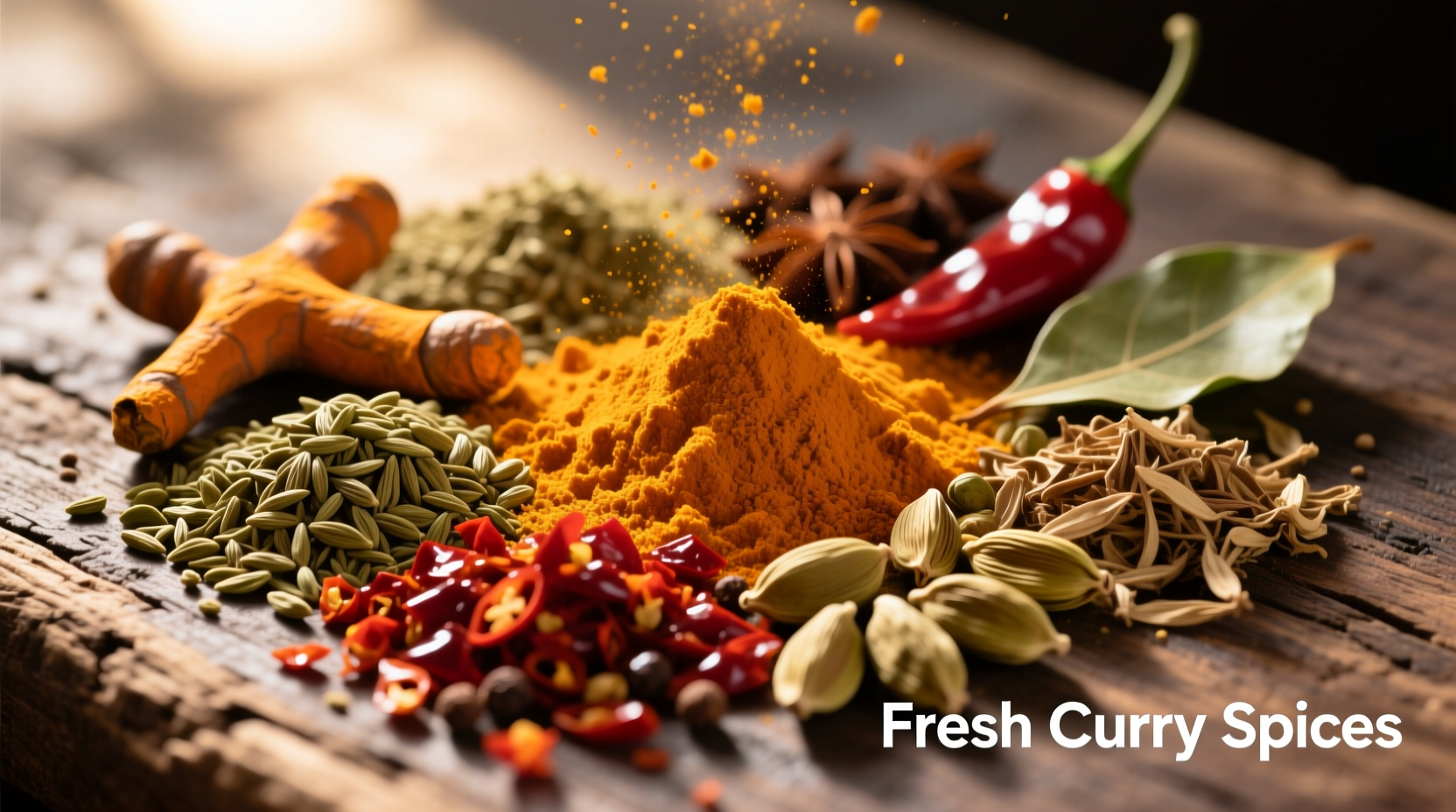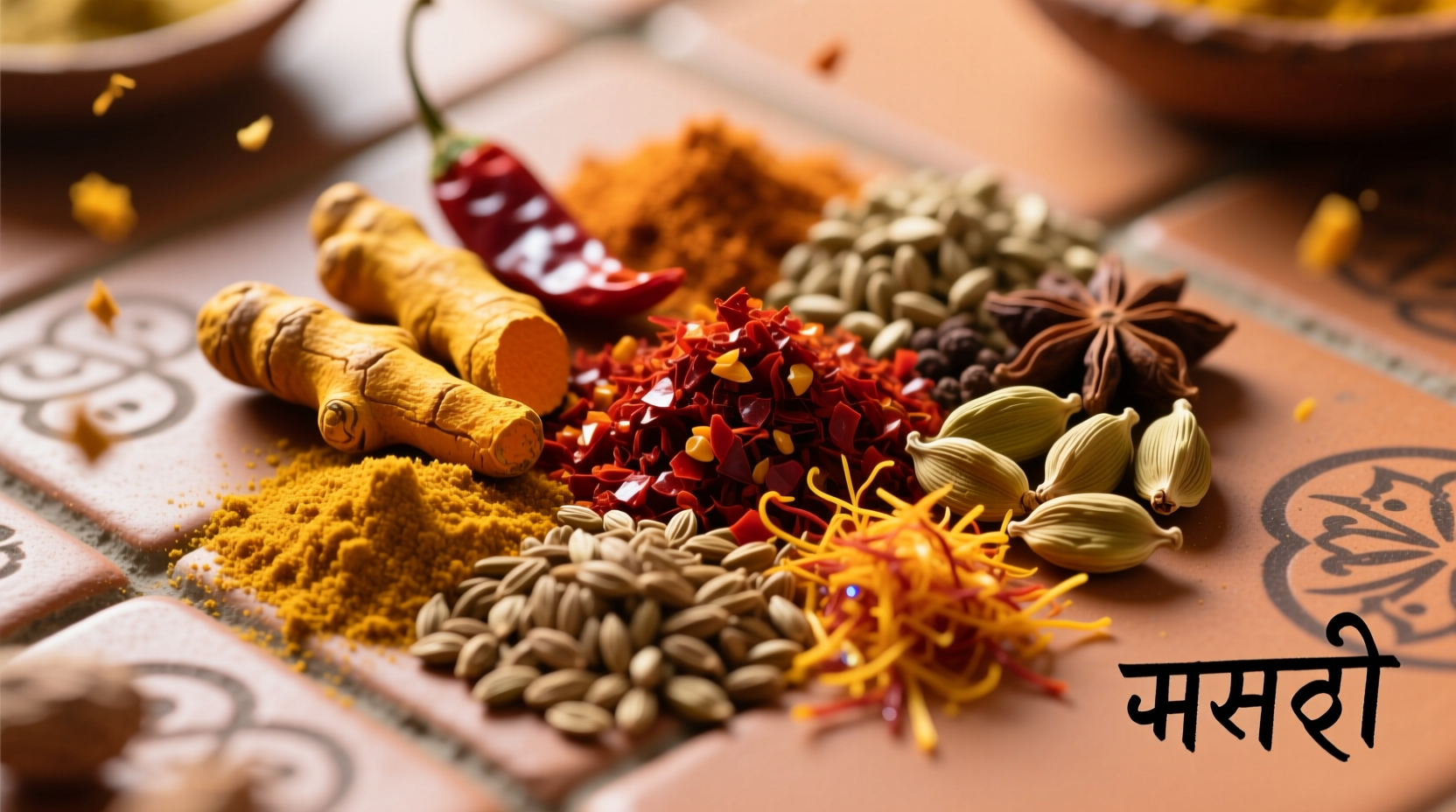Ever wondered why your homemade curry doesn't taste like the restaurant version? The secret lies not in a mysterious 'curry powder' but in understanding how individual spices work together. This guide reveals exactly which spices create authentic curry flavors, how they differ across global cuisines, and professional techniques to maximize their potential in your kitchen.
Your Essential Curry Spice Foundation
Before exploring regional variations, every cook needs to master these five fundamental spices that form the backbone of most curry traditions:
- Turmeric - Provides earthy warmth and vibrant yellow color, with subtle bitter notes that balance richer ingredients
- Coriander seeds - Offer citrusy, floral notes that mellow when toasted, creating a sweet foundation
- Cumin - Delivers warm, nutty depth that anchors complex spice blends
- Mustard seeds - Pop when heated, releasing pungent aroma essential in South Indian curries
- Fenugreek - Adds distinctive maple-like sweetness in small quantities (use sparingly!)
Professional chefs emphasize that freshness matters more than quantity. Whole spices retain their volatile oils up to six months longer than pre-ground versions, dramatically improving flavor complexity. Toasting whole spices in a dry pan before grinding releases their essential oils, creating deeper, more rounded flavors impossible to achieve with store-bought blends.

Regional Spice Profiles: Beyond Generic Curry Powder
The term 'curry' encompasses wildly different spice traditions across continents. Understanding these distinctions prevents flavor confusion and helps you recreate authentic dishes:
| Curry Type | Signature Spices | Flavor Profile | Key Technique |
|---|---|---|---|
| North Indian | Garam masala, cardamom, cloves | Warm, aromatic, moderate heat | Dry-roasting whole spices before grinding |
| South Indian | Mustard seeds, curry leaves, tamarind | Tangy, coconut-based, complex heat | Tempering spices in hot oil first (tadka) |
| Thai | Lemongrass, galangal, kaffir lime | Bright, herbal, layered heat | Pounding fresh ingredients into paste |
| Japanese | Fenugreek, nigella, Japanese pepper | Mild, sweet, umami-rich | Simmering with meat/fish stock |
This comparative analysis from the Encyclopedia Britannica's culinary history section demonstrates why substituting ingredients between regional styles creates flavor imbalances. Authentic Thai curry pastes require fresh galangal—not ginger—because its unique chemical compounds (1,8-cineole and alpha-pinene) create the characteristic citrus-herbal notes impossible to replicate with common substitutes.
Mastering Spice Timing: When to Add Each Ingredient
Professional kitchens follow a precise sequence that home cooks often overlook. The order of addition affects flavor extraction and chemical interactions:
- Tempering stage: Heat oil to shimmering point, add mustard/cumin seeds until they pop (releases glucosinolates)
- Aromatic base: Add onions, ginger, garlic after seeds to prevent burning
- Dry spices: Incorporate turmeric and coriander after aromatics soften (140°F/60°C optimal for curcumin solubility)
- Liquid addition: Pour tomatoes/coconut milk to stop cooking process and preserve volatile compounds
- Finishing touches: Stir in fresh curry leaves or garam masala off-heat to preserve delicate aromas
According to research published in the Journal of Agricultural and Food Chemistry, heating turmeric with black pepper increases curcumin absorption by 2000%. This explains why traditional Indian spice blends always include both ingredients—a scientific validation of centuries-old culinary wisdom.
Avoiding Common Curry Mistakes
Even experienced cooks make these critical errors that compromise flavor:
- Over-relying on curry powder: Commercial blends often contain 30-50% filler (flour or starch) and stale spices. Create your own small-batch blends for superior results
- Burning spices: Ground spices burn at 325°F (163°C)—always cook on medium-low after adding to aromatics
- Incorrect acid balance: Too much tomato overwhelms delicate spices; use tamarind or amchur (mango powder) for authentic sour notes
- Improper storage: Light degrades curcumin—store turmeric in opaque containers away from windows
When adjusting heat levels, remember that chili compounds (capsaicin) are oil-soluble. Adding dairy or coconut milk after cooking provides better heat control than incorporating during the cooking process, as the fats bind to capsaicin molecules more effectively at room temperature.
Curry Spice Evolution Timeline
Understanding historical context reveals why certain spice combinations developed:
- 2500 BCE: Turmeric cultivation begins in Southeast Asia, initially for dyeing textiles
- 300 BCE: Pepper trade routes established between India and Rome
- 15th century: Portuguese traders introduce chili peppers to India (replacing black pepper in many recipes)
- 18th century: British colonists create 'curry powder' as shelf-stable approximation of complex spice blends
- 20th century: Global migration spreads regional curry traditions worldwide
This historical progression documented by the UN Food and Agriculture Organization's spice trade archives shows how trade routes and colonial history shaped modern curry traditions. The British adaptation of Indian cooking techniques created the misleading concept of 'curry' as a single dish rather than a diverse cooking style.
When Substitutions Work (and When They Don't)
Not all spice substitutions maintain authentic flavor profiles. These context boundaries help you make informed decisions:
- Safe substitution: Cilantro stems for fresh coriander leaves (similar chemical profile)
- Risky substitution: Ginger for galangal (different terpene compounds alter flavor balance)
- Never substitute: Regular chili powder for Kashmiri chili (different capsaicin levels destroy dish balance)
- Regional adaptation: Using smoked paprika in Caribbean curry creates fusion flavor (acceptable for creative cooking but not authenticity)
Professional chefs follow this principle: substitute within the same flavor compound family. For example, cardamom and cinnamon both contain eugenol, making them somewhat interchangeable in certain applications, while cumin's distinctive cuminaldehyde compounds have no true substitute.
Practical Spice Storage Guide
Maximize shelf life and flavor potency with these evidence-based storage techniques:
- Store whole spices in airtight containers away from light (preserves 85% of volatile compounds vs 40% in clear containers)
- Freeze whole nutmeg and cinnamon sticks (extends freshness to 3+ years)
- Grind spices immediately before use (ground spices lose 50% flavor compounds within 6 months)
- Test freshness by rubbing between fingers—fresh spices release strong aroma instantly
These recommendations align with storage protocols from the USDA National Agricultural Library's spice preservation guidelines, which document how proper storage maintains antioxidant levels critical for both flavor and health benefits.











 浙公网安备
33010002000092号
浙公网安备
33010002000092号 浙B2-20120091-4
浙B2-20120091-4